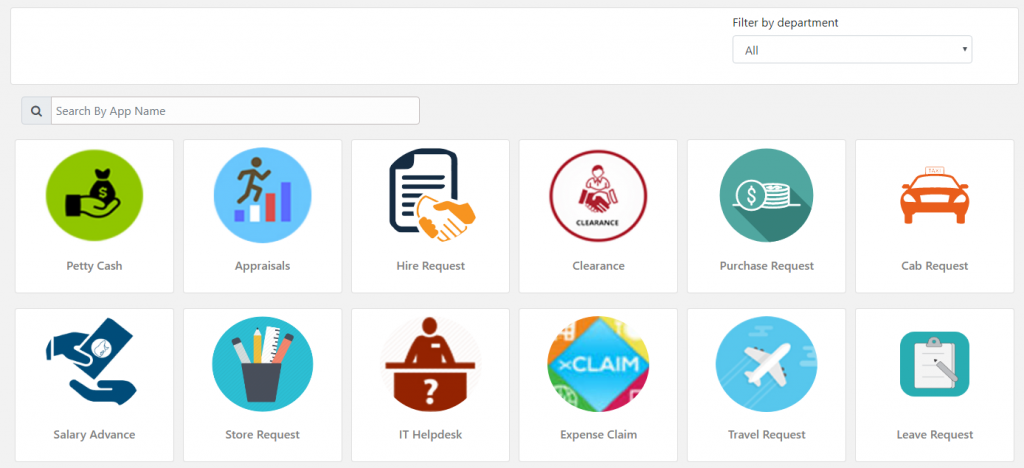- July 19, 2019
- Posted by: admin
- Category: Automation, Business Process Automation, Business Process Management, Digital, Digital Transformation, Microsoft, Office365
The Foundation
For most organizations (mostly in the mid-large sized category and spanning across various verticals) that we’ve worked with, we have always found that they have Management Information Systems (MIS) at least for their core functions. These MIS include systems such as Finance Management Information System, Supply Chain Management Information Systems, Human Resource (HR) Management Information Systems, Customer Relationship Management Systems just to name but a few.
In some cases, you’ll find these information systems encapsulated in one all-encompassing software typically referred to as Enterprise Resource Planning (ERP) system. ERP systems provide integrated software modules for each functional area (Finance, HR, Inventory, Procurement etc.) with a unified database.
In other cases, you have organizations that have invested in single function systems. For example, you’ll have single function system with its own database serving one function only i.e. HR, finance, supply chain, CRM and others. And typically, in such kind of scenarios, there wouldn’t be much integration between these systems.
For either of the above mentioned cases we have found gaps which translate, many a times, to business pains or problems.
Problems with Current State
Some of the pains that businesses have reported are:
- Disparate and Siloed Management Information Systems (MIS)- In scenarios where you have single function systems you’ll find, mostly there is no integration between the systems or if it is there it is some loosely set up exchange of information which doesn’t lend itself well if you require to get a 360-degree view of the entire organization to effectively make decision or correlate information across functional areas of your business.
- Limited Access & Missing Functionality– Even with a comprehensive all-encompassing ERP you’ll find access is only limited to key users. Access will be available to users in the specific functional domains e.g. if it is a Financial System/Module – access will be limited to Finance Users only and not open to other users outside of that department. This means that for scenarios where users outside of those functional domain areas need access to the system to execute a process or two, it is not available to them. This then means having to come up with other alternatives to address this limitation. The only probable solution that many organization’s default to is using paper-based forms to allow users to make requests (e.g. Expense Claims, Petty Cash Requests) which are then feed into the system by those that have access. So in addressing this limitation you have a slow, manual paper-based process which introduces additional costs around, paper, printing, other consumables, storage and maintenance of paper records. This, you’ll agree with me, is not the most efficient and productive way to run business operations. Not to mention the human errors that are likely to happen when using paper-based processes.
- High Costs– The commonly used off-the-shelf ERPs, the likes of Microsoft Dynamics Navision, SAP, PeopleSoft, Sage and others are very costly to acquire and deploy. And in most cases customers end up deploying a few of the core modules and turn off some of the features in an effort to manage costs. This essentially means they don’t get the full breath of what the software offers hence the need for cost-effective, easy to use digital alternatives.
Solutions and Benefits
So what’s the solution to these problems?
Since Alternate’s founding we’ve worked with a number of companies big and small, across all sectors supporting in their efforts to automate manual processes and bridge the last mile in terms of empowering their employees and increasing productivity.
We’ve worked with the likes of East Africa Breweries Limited (EABL), Osho Chemical Industries, Auto Xpress, Sameer Africa, UAP Insurance, International Planned Parenthood Federation (IPPF), Tax Justice Network Africa (TJNA) and others in addressing these very problems that we’ve mentioned here.
Using Business Process Automation tools that Microsoft provides we’ve been able to automate many of these manual paper-based processes.
Tools such as SharePoint, Office 365, Microsoft Flow allow us to develop business applications which fill the gap that’s left by most ERPs
Using these tools, we’re able to develop interactive, user friendly interfaces (web-based) that have deep integration with Line of Business (LOB) applications (ERPs, HRMIS, CRM etc.) to effectively capture, process and track business processes from inception to the end.
Other benefit that you’ll get from automating your business process are:
- Enhance Accountability and Compliance
- Reduce on costs and resource wastage
- Increase visibility through status tracking
- Increase productivity in your organization
- Reduce on human error
Catalog of our current suite of applications:
If you would like to test-drive these applications at no cost at all please sign up for a FREE 30 Day Fully Featured Trial here
You can also request for a LIVE demo either on site or online by signing up here.

